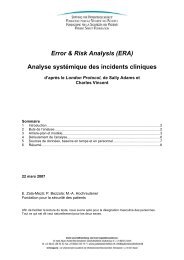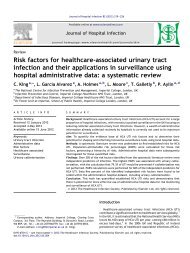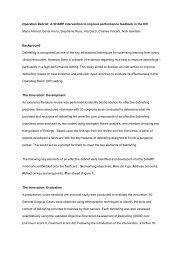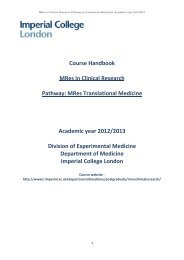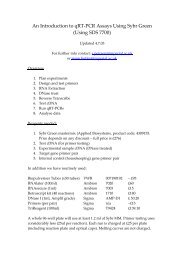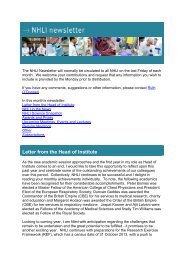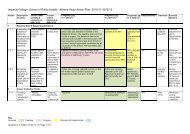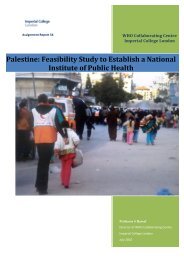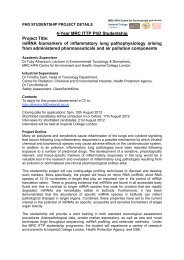QOF Plus Year 1 - Imperial College London
QOF Plus Year 1 - Imperial College London
QOF Plus Year 1 - Imperial College London
You also want an ePaper? Increase the reach of your titles
YUMPU automatically turns print PDFs into web optimized ePapers that Google loves.
Exception reportingMany <strong>QOF</strong> (and a significant number of the new <strong>QOF</strong>+) indicators reward based on a percentagecalculation where the numerator represents all the patients who meet the given criteria and thedenominator all the patients to whom the indicator should apply.(8)The denominator for a given indicator at a given practice , is constituted by applying a seriesof rules to the relevant disease register , which itself is a subset of the practice population .These rules are of two forms: Exclusions , which capture the specific criteria of each indicator. Not all indicators willapply to every patient on the disease register and there may be diagnostic anddemographic restrictions (for example, an indicator applicable to those within a certainage range.) These are applied in a systematic way to select a subpopulation of thedisease register. Exceptions , which are the dynamic mechanism by which practices can omit certainpatients from inclusion in the denominator. Exceptions provide practices with amechanism to ensure that inappropriate treatment is not pursued and that they are notpenalised for issues out of their control (for example uncooperative patients). Table A2.6details the current list of valid exceptions. Most exceptions are time-limited (typicallywith a period equivalent to that of the testing/review-cycle for a given indicator) whichmeans that there is an ongoing workload associated with managing exception reporting.ABCDEFGHIPatient recorded as refusing to attend review who have been invited on at least threedifferent occasions during the preceding 12 monthsPatients for whom it is not appropriate to review the chronic disease parameters becauseof particular circumstances, for example terminal illness or extreme frailtyPatients newly diagnosed within the practice or who have recently registered with thepractice, who should have measurements made within 3 months and delivery of clinicalstandards within 9 monthsPatients who are on maximum tolerated doses of medication whose levels remain suboptimalPatients for whom prescribing a medication is not clinically appropriate, for example thosewho have an allergy, another contraindication or who have experienced an adversereactionWhere a patient has not tolerated medicationWhere a patient does not agree to investigation or treatment (informed dissent) and thishas been recorded in the medical recordsWhere the patient has a supervening condition which makes treatment of the targetcondition inappropriate, for example cholesterol reduction in a patient with liver diseaseWhere an investigative service or secondary care service is unavailableTable A2.6Current list of valid reasons for exception reporting. Sourced from the GMS Contractdocumentation (DoH, 2003)110



